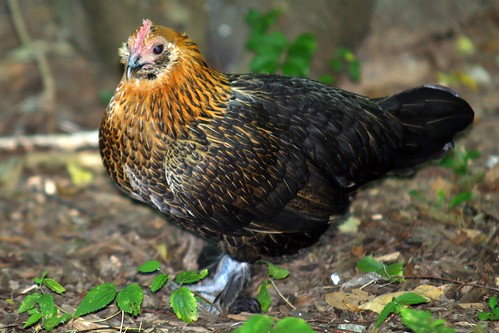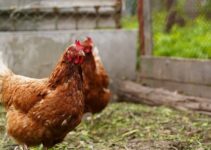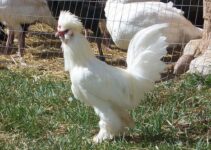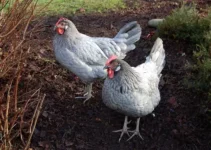Bantam chickens are small varieties of fowl that are popular among backyard chicken keepers. They come in many different breeds, colors and personalities. Some bantams are miniature versions of standard chickens, while others are naturally small and have no large counterparts. The word bantam comes from the city of Bantam in Indonesia, where many of these small breeds were discovered.
Bantams have many advantages over standard chickens. They are easier to handle, require less space and feed, lay smaller but more flavorful eggs, and make good pets and show birds. They are also quieter than standard chickens, which makes them ideal for urban settings.
Contents
History of Bantam Chickens
The history of bantam chickens is not very clear, but it is believed that they originated from Southeast Asia, especially Indonesia. Sailors who visited the port of Bantam (now Banten) were impressed by the local chickens, which were smaller than the ones they knew. They brought some of these chickens back to Europe and other parts of the world. The word bantam was derived from the name of the port.
Bantam chickens have been bred for centuries for various purposes. Some were used as fighting birds, others as ornamental birds, and others as egg layers and meat producers. Some bantams were developed by crossing standard breeds with naturally small breeds or by selecting for dwarfism. Others were created by introducing new genes or mutations that affected their size and appearance.
Today, there are hundreds of bantam breeds recognized by different poultry associations around the world. Some of them are true bantams, meaning they have no large counterparts. Others are miniaturized versions of standard breeds or hybrids between different bantams. Bantams come in a variety of shapes, colors and patterns. Some have unique features like feathered legs, crests, beards or frizzled feathers.
Types of Bantam Chickens
There are three main types of bantam chickens:
- True bantams
- Miniaturized bantams
- Developed bantams
True bantams are naturally small breeds that have no large counterparts. They only come in one size, which is small. Some examples of true bantams are Nankin, Sebright, Rosecomb and Japanese.
Miniaturized bantams are smaller versions of standard breeds that were created by selective breeding or genetic mutations. They usually look similar to their larger counterparts, but with some differences in proportions and features. Some examples of miniaturized bantams are Cochin, Orpington, Plymouth Rock and Brahma.
Developed bantams are hybrids between different bantam breeds or between a bantam and a standard breed. They often have unique characteristics that make them stand out from other breeds. Some examples of developed bantams are Easter Egger, Mille Fleur d’Uccle, Polish and Silkie.
Bantam chickens come in hundreds of varieties that differ in color, pattern, comb type, feather type and leg type. Some of the most popular varieties are:
- White Silkie Bantam: A fluffy white bird with black skin, blue earlobes and five toes on each foot.
- Mottled Cochin Bantam: A round bird with feathered legs and feet and black feathers with white tips.
- Barred Plymouth Rock Bantam: A black-and-white striped bird with a single comb and yellow legs.
- Mille Fleur d’Uccle Bantam: A colorful bird with feathered legs and feet and brown feathers with black-and-white spots.
- Buff Brahma Bantam: A large bird with feathered legs and feet and buff-colored feathers with black lacing.
Characteristics of Bantam Chickens
Bantam chickens have some common characteristics that make them different from standard chickens. Some of these characteristics are:
Size
Bantams are much smaller than standard chickens, usually weighing between 16 and 30 ounces and standing about a foot tall. They have delicate features and require less space and feed than larger breeds.
Egg laying
Bantams are generally good egg layers, but their eggs are also smaller than standard eggs. Depending on the breed, they can lay between 50 and 200 eggs per year. Their eggs are often more colorful and flavorful than standard eggs.
Broodiness
Bantams tend to be more broody than standard chickens, meaning they like to sit on their eggs and hatch them. This can be an advantage if you want to raise chicks naturally, but it can also reduce their egg production. Some breeds are more broody than others.
Temperament
Bantams are usually friendly, docile and curious birds that enjoy human interaction. They can be easily tamed and handled by children or adults. They can also get along well with other poultry or pets if raised together. However, some breeds can be more aggressive or flighty than others.
Appearance
Bantams have a variety of shapes, colors and patterns that make them attractive and unique. Some have large combs, short legs, feathered feet or arched tails that give them a distinctive look. Some also have special feather types like frizzled, silky or laced feathers that add to their beauty.





